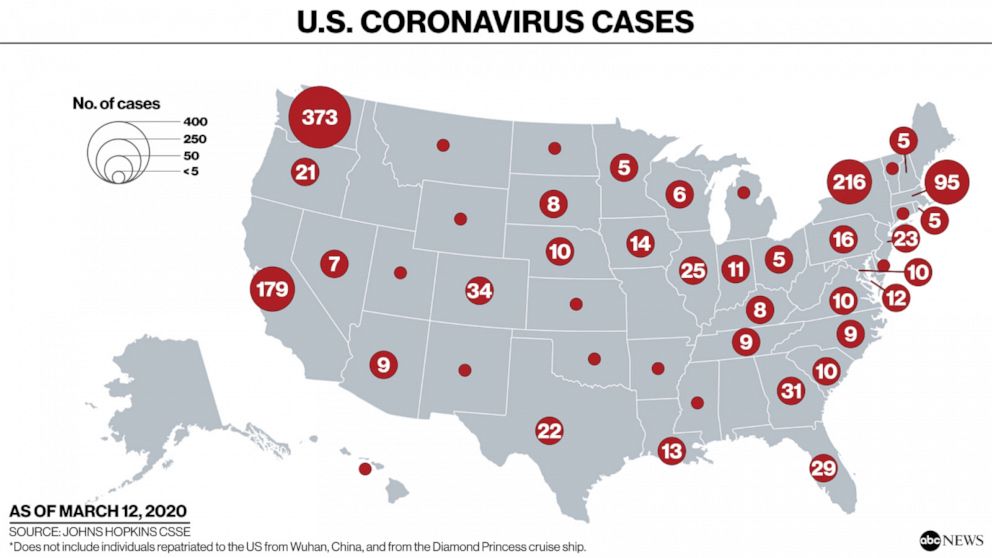How many cases of coronavirus are in the US ?
Between 160 million and 214 million people in the U.S. could be infected over the course of the epidemic, according to one projection. That could last months or even over a year, with infections concentrated in shorter periods, staggered across time in different communities, experts said. As many as 200,000 to 1.7 million people could die
South Korea has tested more than 230,000 people for free and set up drive-thru testing weeks ago.
Meanwhile, the US vice president and the Health and Human Services secretary said this week they don't know how many Americans have been tested. But members of both parties say there aren't nearly enough tests available.
There are a few factors for the difference in responses, said Dr. Rob Davidson, an emergency room doctor and executive director of the Committee to Protect Medicare.
"The public health infrastructure and the response to outbreaks and the National Security Council have been gutted by this administration," Davidson said.
Two years ago, the US Centers for Disease Control and Prevention stopped funding epidemic prevention activities in 39 countries, including China, after the Trump administration refused to reallocate money to a program that started during the government's response to the Ebola outbreak in 2014.
At that time, former CDC director Dr. Tom Frieden said the move "would significantly increase the chance an epidemic will spread without our knowledge and endanger lives in our country and around the world."
Another factor involves the tests themselves — including malfunctions, shortages and delays in availability.
In the first few weeks of coronavirus in the US, the CDC was the only facility in the country that could confirm test results.
"We had the ability about five weeks ago to use a WHO — World Health Organization — approved test that's been used in other countries that was available, and that was rejected so we could use a test that was developed here," Davidson said.
After test kits were later sent across the country, some were flawed. "So they go back to the drawing board," Davidson said. "It put us behind by about four or five weeks."
Meanwhile, the US vice president and the Health and Human Services secretary said this week they don't know how many Americans have been tested. But members of both parties say there aren't nearly enough tests available.
There are a few factors for the difference in responses, said Dr. Rob Davidson, an emergency room doctor and executive director of the Committee to Protect Medicare.
"The public health infrastructure and the response to outbreaks and the National Security Council have been gutted by this administration," Davidson said.
Two years ago, the US Centers for Disease Control and Prevention stopped funding epidemic prevention activities in 39 countries, including China, after the Trump administration refused to reallocate money to a program that started during the government's response to the Ebola outbreak in 2014.
At that time, former CDC director Dr. Tom Frieden said the move "would significantly increase the chance an epidemic will spread without our knowledge and endanger lives in our country and around the world."
Another factor involves the tests themselves — including malfunctions, shortages and delays in availability.
In the first few weeks of coronavirus in the US, the CDC was the only facility in the country that could confirm test results.
"We had the ability about five weeks ago to use a WHO — World Health Organization — approved test that's been used in other countries that was available, and that was rejected so we could use a test that was developed here," Davidson said.
After test kits were later sent across the country, some were flawed. "So they go back to the drawing board," Davidson said. "It put us behind by about four or five weeks."
 United States
United States

Coronavirus Cases:
1,832
Deaths:
41
Recovered:
31




Comments
Post a Comment